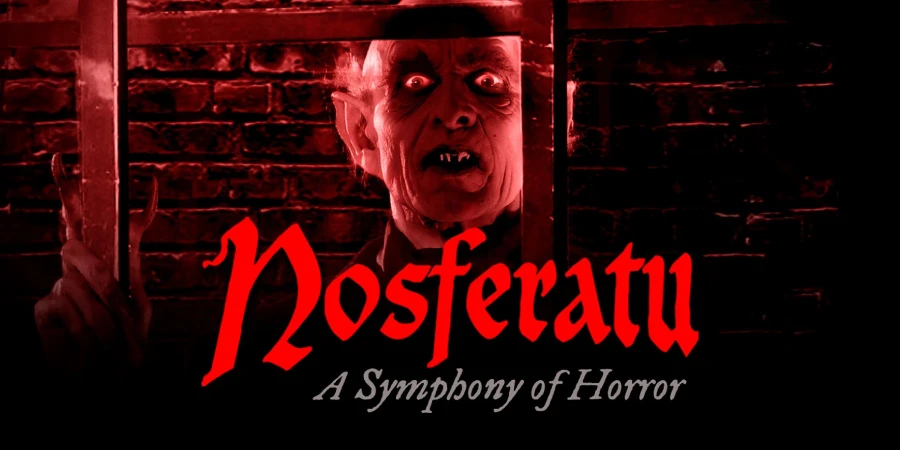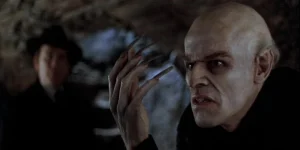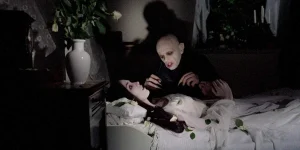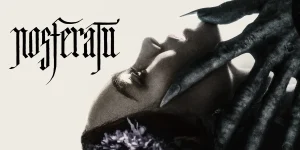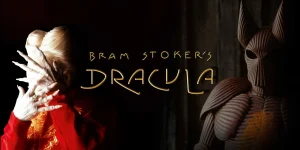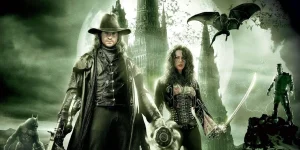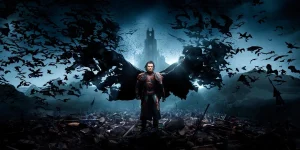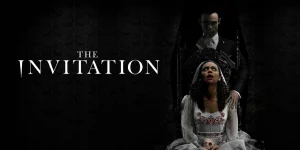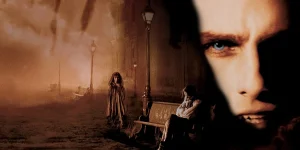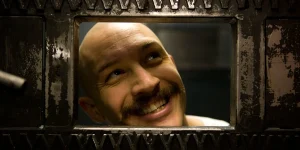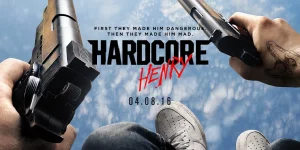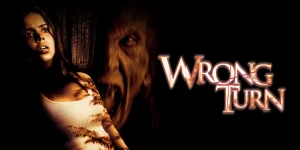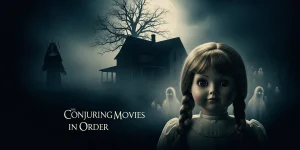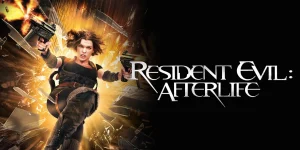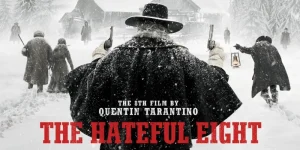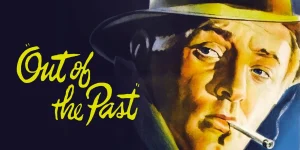F.W. Murnau’s Nosferatu: Eine Symphonie des Grauens (A Symphony of Horror) is not only one of the earliest horror films but also one of the most influential. This silent-era classic introduced cinema to the vampire myth in terrifying, expressionist style. Though unofficially adapted from Bram Stoker’s Dracula, Nosferatu deviates in key ways that make it stand apart both artistically and thematically.
Table of Contents
ToggleDetailed Summary
The Journey to Transylvania
The film opens in the fictional German town of Wisborg, where a real estate agent named Knock sends his young employee Thomas Hutter on a business trip to meet a mysterious new client, Count Orlok, who lives in the Carpathian Mountains. Hutter is to arrange for Orlok’s move to a house across from his own, which he shares with his beloved wife, Ellen.
As Hutter travels deeper into Transylvania, villagers grow increasingly fearful at the mention of Orlok. Once he arrives at the eerie castle, Hutter is greeted by the count himself—played by Max Schreck, whose ghoulish makeup and unnatural movements are still the stuff of cinematic nightmares.
The Revelation of Orlok’s Nature
While staying in the castle, Hutter discovers strange phenomena: he is bitten during the night, finds mysterious documents referring to “Nosferatu,” and eventually realizes Orlok is a vampire. A hauntingly iconic scene shows Orlok slowly rising from his coffin, standing stiffly upright like a corpse pulled by unseen strings.
Hutter attempts to escape but is injured and delayed. Meanwhile, Orlok sets off to Wisborg, transporting himself in coffins filled with soil aboard a ship.
The Plague Ship
The journey of Orlok to Wisborg brings with it a trail of death. Aboard the ship, crew members begin dying mysteriously. By the time the vessel reaches Wisborg, only the captain remains, tied to the wheel, dead. Orlok rises from the hold and walks into the town under the cover of darkness, carrying death with him.
The town soon believes a plague has come—bodies pile up, and fear consumes the citizens. Meanwhile, Hutter returns home to Ellen, who begins to sense a strange psychic connection with the vampire.
The Sacrifice
Ellen discovers through ancient texts that the only way to destroy Nosferatu is through the willing sacrifice of a pure-hearted woman who distracts him with her beauty and keeps him until sunrise. Knowing this, Ellen makes the ultimate choice.
She invites Orlok into her room. He feeds on her slowly, mesmerized, while time slips toward dawn. As the sun rises, Orlok—so distracted by his feeding—fails to retreat. He vanishes in a puff of smoke and shadow, destroyed by the daylight. Ellen dies from blood loss, her sacrifice ending the vampire’s terror.
Movie Ending
The final scenes are haunting and poetic. After Orlok perishes, the film slows into silence. Hutter rushes to Ellen’s side, but she is already dying. Her body lies still as light floods the room. The final title cards confirm her death but also her victory: the evil has been destroyed through her selfless act.
The camera lingers on the empty castle in Transylvania—abandoned, its threat ended. The film ends not on triumphant fanfare, but with a somber acknowledgment of sacrifice and the eerie quiet after horror.
Are There Post-Credits Scenes?
No. Nosferatu is a silent-era film, and the concept of post-credits scenes was unheard of at the time. Once the final title card appears, the film ends definitively. No winks, no sequels teased—just the finality of horror undone by daylight.
Type of Movie
Nosferatu is a silent horror film and an early example of German Expressionist cinema. It’s drenched in gothic atmosphere, slow-building dread, and disturbing visuals. Stylistically, it pioneered techniques still used in horror today—such as distorted lighting, elongated shadows, and unsettling camera angles.
Cast
- Max Schreck as Count Orlok / Nosferatu
- Gustav von Wangenheim as Thomas Hutter
- Greta Schröder as Ellen Hutter
- Alexander Granach as Knock
- Georg H. Schnell as Harding
- Ruth Landshoff as Ruth
Film Music and Composer
Since Nosferatu is a silent film, the original music was composed by Hans Erdmann and was intended to be played live by an orchestra during screenings. Unfortunately, most of Erdmann’s original score has been lost.
Modern releases of Nosferatu often feature new compositions—some orchestral, some minimalist or electronic. Notable re-scorings include works by:
- James Bernard (for Hammer Films’ version)
- Steven Severin (of Siouxsie and the Banshees)
- Art Zoyd (avant-garde group)
Filming Locations
Filming took place primarily in Germany and Slovakia:
- Wismar, Germany – served as the fictional Wisborg
- Orava Castle, Slovakia – Count Orlok’s eerie castle
- Lübeck, Germany – additional exterior shots
The stark, real-world locations were essential in grounding the surreal elements of the film. The use of natural light and real architecture gave the film a haunting realism unusual for its time.
Awards and Nominations
As a 1922 silent film, Nosferatu predates most modern film award institutions. It did not receive awards upon release but is now widely recognized as a masterpiece of early cinema.
Notable recognitions:
- Selected for preservation by UNESCO
- Frequently listed among the greatest horror films of all time
- Screened in film schools and retrospectives worldwide
Behind the Scenes Insights
- Max Schreck’s name means “terror” in German, leading to rumors he was an actual vampire (satirized in the film Shadow of the Vampire).
- F.W. Murnau had to change character names due to copyright issues with Bram Stoker’s estate.
- The production company, Prana Film, was sued by Stoker’s widow and bankrupted as a result.
- All known copies of the film were ordered to be destroyed—but some survived, allowing the film to become a cult classic.
Inspirations and References
- Based unofficially on Dracula by Bram Stoker
- Altered character names and plot points to avoid copyright issues
- Emphasized pestilence and plague as metaphors for vampirism, likely reflecting post-WWI European anxieties
Alternate Endings and Deleted Scenes
No alternate endings are known to exist. However, due to the lawsuits and attempts to destroy all prints, many versions of the film differ slightly depending on which cut survived and where. Restorations have attempted to piece together the most complete version using various sources.
Book Adaptations and Differences
While based on Dracula, the movie includes significant changes:
- Count Orlok replaces Count Dracula
- Thomas Hutter stands in for Jonathan Harker
- The vampire’s death by sunlight is Nosferatu’s innovation—it is not present in the original Dracula novel
- The movie replaces religious salvation with personal sacrifice (Ellen instead of Van Helsing)
These changes helped create a distinctly European horror tone—one less rooted in Christian imagery and more in existential dread.
Memorable Scenes and Quotes
Key Scenes
- Orlok’s silhouette creeping up the stairs—perhaps the most iconic vampire shot in film history
- Orlok rising stiffly from his coffin aboard the ship
- The final scene of Ellen sacrificing herself to destroy the vampire
Iconic Quotes (Translated Title Cards)
- “Blood! Your precious blood!” (Orlok’s letter to Knock)
- “You have already delivered yourself to Nosferatu.”
- “She gave her blood to save the town.”
Easter Eggs and Hidden Details
- The shadow of Orlok becomes a character itself, symbolizing death encroaching
- Rats used in plague scenes were real and controversially handled
- The use of real towns and buildings makes Orlok’s appearance feel jarringly supernatural
Trivia
- The word “Nosferatu” was believed to be an Eastern European term for vampire, but it’s likely an invention or mistranslation.
- Max Schreck allegedly stayed in makeup and character off set, feeding the legend.
- The movie was banned in Sweden until the 1970s due to its graphic imagery.
Why Watch?
If you’re a fan of horror, you owe it to yourself to watch this film. It’s not just historically important—it’s genuinely eerie, visually inventive, and impressively timeless for a movie over a century old. Its influence on everything from Dracula to Shadow of the Vampire to Nosferatu (2024) is undeniable.
Director’s Other Movies
- Faust (1926)
- Sunrise: A Song of Two Humans (1927)
- The Last Laugh (1924)
- Tabu: A Story of the South Seas (1931)
Recommended Films for Fans
- Dracula (1931)
- Nosferatu (2024)
- Shadow of the Vampire (2000)
- The Cabinet of Dr. Caligari (1920)
- Faust (1926)
- Let the Right One In (2008)
- Nosferatu the Vampyre (1979)

